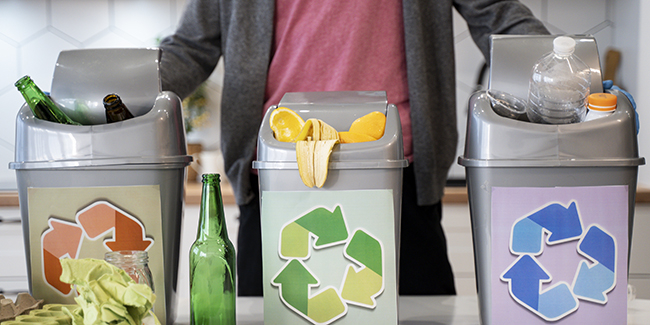Adopting waste sorting habits at home is a crucial step toward a more sustainable lifestyle. This article provides a practical guide, explaining the different types of waste and appropriate sorting methods. By understanding these basic principles, each household can contribute significantly to waste reduction and environmental preservation.
1. Identifying Waste Categories:
Before starting to sort, it's important to understand the categories of waste. Waste can be classified into three main categories: recyclable waste, compostable waste, and non-recyclable waste
- Recyclable Waste: Paper, cardboard, plastic, glass, and metals are examples of recyclable waste. They can be transformed into new products
- Compostable Waste: Organic waste such as food scraps, peels, and garden waste is compostable. Composting allows the production of natural fertilizer.
- Non-Recyclable Waste: Some waste, such as soiled food packaging, used tissues, and hygiene items, cannot be recycled or composted.
2. Setting Up Sorting Bins:
Place sorting bins in the kitchen to facilitate the process. One bin for recyclables, one for compostable waste, and one for non-recyclable waste. This simplifies sorting on a daily basis.
3. Educating the Family:
Inform family members about the importance of waste sorting. Explain the environmental benefits and how every action counts. Involve all members, including children, to create a family culture of environmental responsibility.
4. Avoiding Contamination of Recyclables:
To ensure effective recycling, make sure not to contaminate recyclable materials. Clean containers before placing them in the recycling bin to avoid contamination from residues.
5. Opting for Reusable Products:
Reduce the amount of waste produced by opting for reusable products. Use reusable bags, stainless steel water bottles, and reusable containers for meals.
6. Recycle Electronic and Hazardous Products Properly:
Electronic devices and hazardous products such as batteries and light bulbs require special handling. Look for appropriate collection points for these items, often available at local recycling centers.
Sorting waste at home is a simple yet powerful step to contribute to the protection of our environment. By adopting these practical tips, each household can become a crucial link in the chain of responsible waste management. Together, we can create a positive impact by promoting lifestyle habits that are more planet-friendly.


